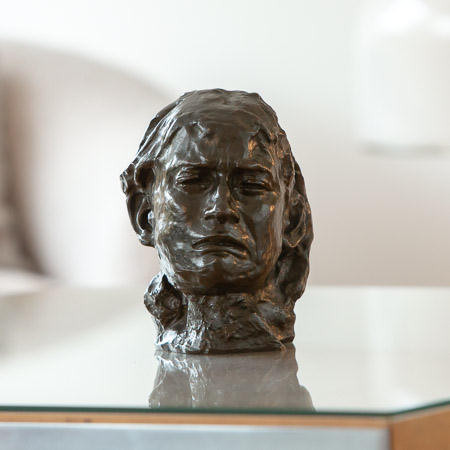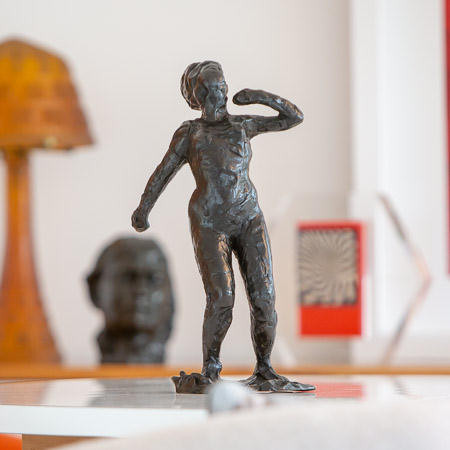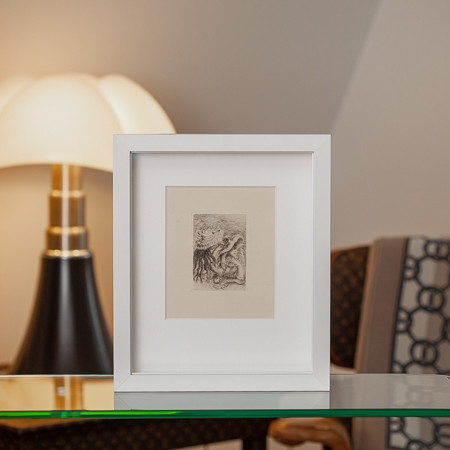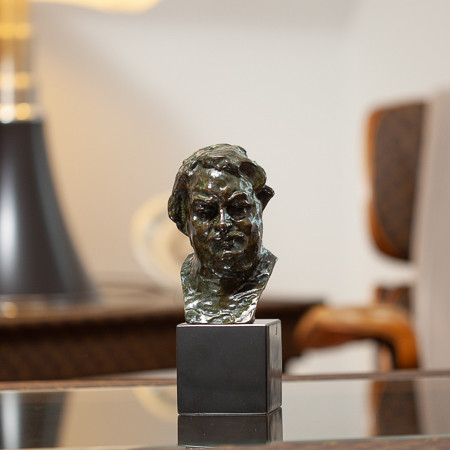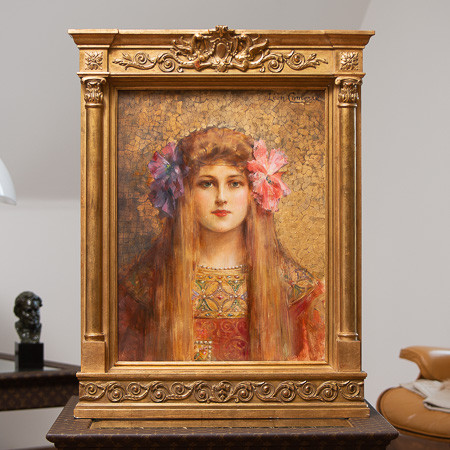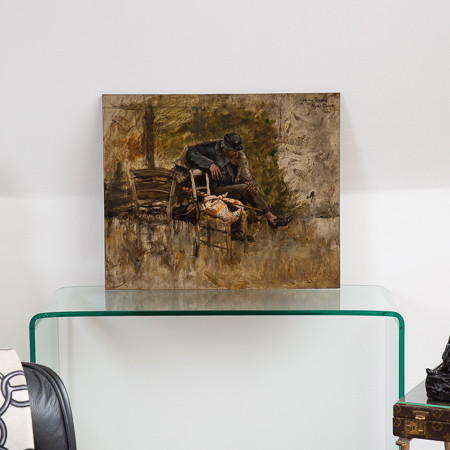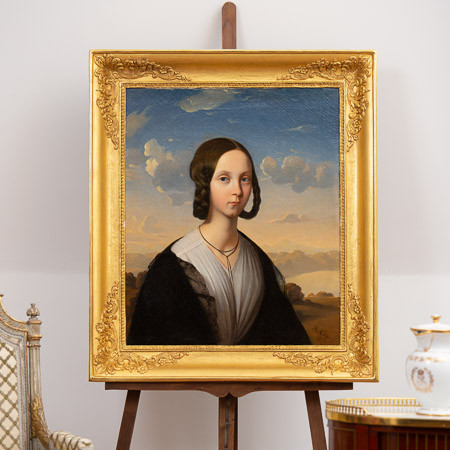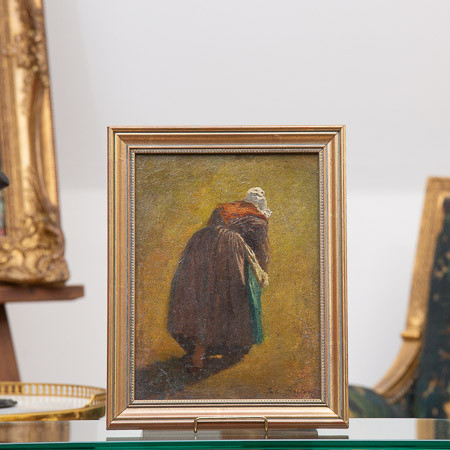About
Posthumous shiny black patina bronze made from the 1851 model. Lost wax-casting by the Valsuani foundry (n° 1/10). Marking on the right back of the plinth.
Ratapoil is a character created by Daumier in 1850. He represents the caricature of a Louis Napoleon Bonaparte partisan.
Daumier was a die-hard republican. In 1831, he did 6 months in jail for drawing a glutton caricature of King Louis-Phillipe. To show is disapproval towards Bonaparte, he published the story of Ratapoil in the Charivari journal in an attempt to alert readers that the regime was a threat.
On August 12th 1850, Ratapoil made his very first appearance in the Charivari in Colonel Ratapoil’s Announcement. In the following days, articles by Clément Caraguel and signed “Colonel Ratapoil” were published in the journal. On September 28th, Ratapoil made his first lithography appearance and about 30 others by 1851.
After the fall of the empire, Daumier gave life back to his character in a style very close to his Don Quichotte drawings. In what was called the “Série Actualités”, one of the plates showed a Napoleon-looking Ratapoil. His mustache, black redingote, and dented top hat helped give Ratapoil a demoted look.
Surprisingly enough, the current sculpture seems fairly modern as opposed to the one from the mid-19th century, especially because of its expressionist features.
Since 1986, a bronze version of Ratapoil is currently preserved at the Musée d’Orsay (n° inv. RF 927). Before that, it belonged to the Musée du Luxembourg from 1892 to 1927 and to the Louvre from 1927 to 1986.
The bronze version has the Daumier signature; an “S” at the back-right angle and “Siot-Decauville fondeur Paris n°4” on the left. It has been lent for several exhibitions around the world.
The original plaster for the bronze belongs in a private collection in Milan. It was made out of ruined soil by Victor Geoffroy-Dechaume.
Between the end of the 19th and throughout the 20th century, other bronze copies have been made by famous founders. Armand Dayot took the initiative to have them made from a second plaster that belonged to him thanks to molder Pouzadoux. It is currently preserved at the Albright Art Gallery in Buffalo.
Around 1890, 20 additional copies were made by Siot-Decauville and another 20 by 1925 by Rudier. All of those were made from the same plaster which belonged to Henri Bing at the time. In 1959, another 15 copies were made by Valsuani from the first plaster.
The Valsuani foundry was established in the 19th century by Marcello Valsuani and his sons Claudio and Attilio. It gained popularity because of the quality of their work using the low-wax casting technique. They are also famous for having recreated in bronze some of the work done by Rodin, Matisse, Daumier, Degas and even Pompon.
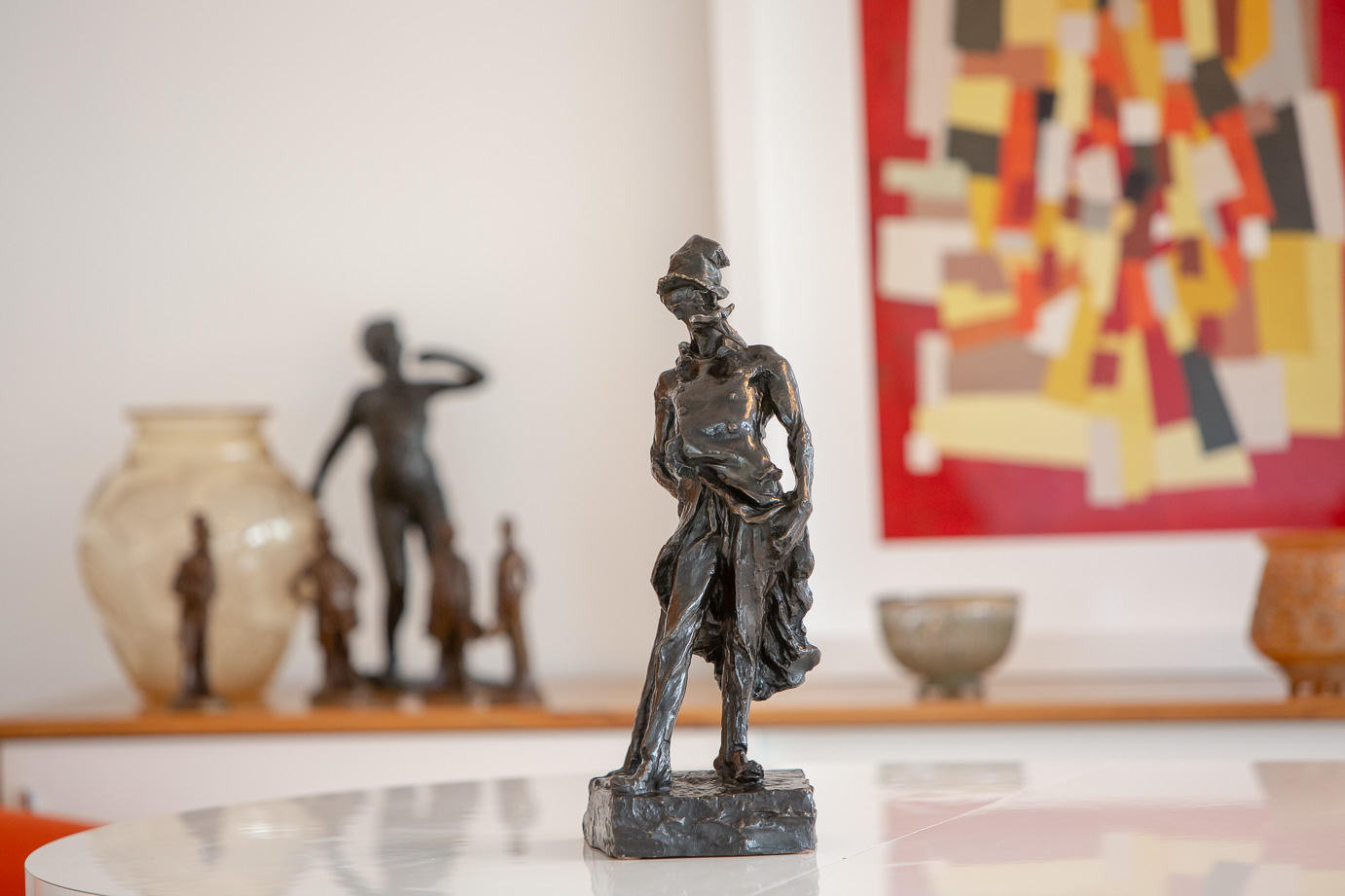
Characteristics
- Year: 1959
- Origin: France
- Artist: Honoré DAUMIER
- Foundryman: Valsuani
- Material or technique: Bronze
- Sizes: 16 x 44.5 x 19 cm (Width x Height x Depth)
Museography
In 2011, the bronze was exhibited at the Polish library in Paris.
A sculpture (bronze) of Honoré Daumier's Ratapoil by the Siot-Decauville foundry is on display at the «Musée d'Orsay in Paris».


